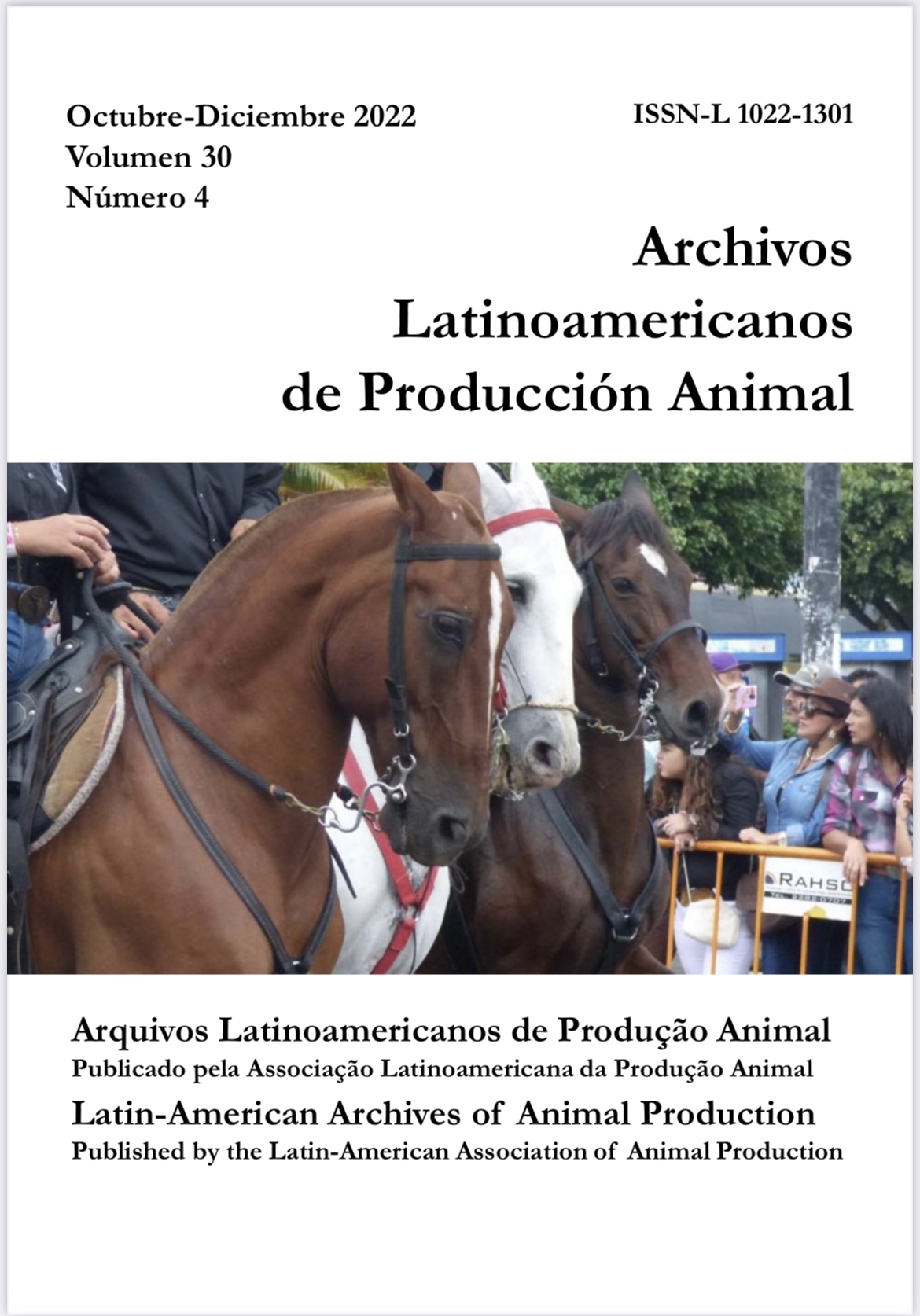Ver ítem
- xmlui.general.dspace_homeCentros Regionales y EEAsCentro Regional Patagonia NorteEEA BarilocheArtículos científicosxmlui.ArtifactBrowser.ItemViewer.trail
- Inicio
- Centros Regionales y EEAs
- Centro Regional Patagonia Norte
- EEA Bariloche
- Artículos científicos
- Ver ítem
Cashmere en cabras Criollas Neuquinas: influencia del momento de la esquila sobre la cantidad y calidad de la fibra
Resumen
Se ha documentado la presencia de cashmere en los vellones de cabras Criolla Neuquina en el norte de la provincia de Nequén, Argentina. El objetivo de este trabajo fue evaluar la cantidad y la calidad de la fibra cosechada en cabras criollas neuquinas según la época de esquila (preparto o posparto). El estudio se realizó en cuatro sitios (Curaco, Manzano Amargo, Cura Mallín y Loncovaca) del norte
[ver mas...]
Se ha documentado la presencia de cashmere en los vellones de cabras Criolla Neuquina en el norte de la provincia de Nequén, Argentina. El objetivo de este trabajo fue evaluar la cantidad y la calidad de la fibra cosechada en cabras criollas neuquinas según la época de esquila (preparto o posparto). El estudio se realizó en cuatro sitios (Curaco, Manzano Amargo, Cura Mallín y Loncovaca) del norte neuquino.
[Cerrar]
In the north of Neuquen province, Argentina, with a stocking rate of 630,000 individuals in the goat family, belonging to the Criolla Neuquina (CNN) breed, cashmere has been found in their fleeces. The objective of this work was to evaluate the quantity and quality of the fibre obtained in CCN, depending on the shearing time (prepartum or postpartum). Our work was performed in four locations (Curaco, Manzano Amargo, Cura Mallin y Loncovaca) in the north
[ver mas...]
In the north of Neuquen province, Argentina, with a stocking rate of 630,000 individuals in the goat family, belonging to the Criolla Neuquina (CNN) breed, cashmere has been found in their fleeces. The objective of this work was to evaluate the quantity and quality of the fibre obtained in CCN, depending on the shearing time (prepartum or postpartum). Our work was performed in four locations (Curaco, Manzano Amargo, Cura Mallin y Loncovaca) in the north of Neuquén. In each location, 25 goats were sheared at prepartum and 25 goat at postpartum. Inferential comparisons were performed for both shearing times within each location, on the variables fleece weight (PV), cashmere weight (PCash) and Mean Diameter of cashmere (DMCash). At postpartum were found in all locations that between 30 and 52% of the goats have totally shed their cashmere coat. The shearing time significantly affected PV in all sites, being the weight obtained prepartum higher, so was PCash in all locations except Cura Mallin and DMCash proved to be significantly coarser for the prepartum shorn fleeces in Cura Mallin and Manzano Amargo. Prepartum PV values were within 445.2 g and 654.0 g; postpartum PV were between 193.8 g and 338.6 g. Prepartum PCash values were within 84.1 g and 160.4 g while postpartum PCash were between 51.3 and 106.2 g. Prepartum DMCash values were within 19.4 µm and 20.2 µm and postpartum DMCash values were between 18.2 µm and 19.2 µm. The shedding biological process which occurs between the two shearing times evaluated here, is a conditioning factor for quantity and quality of cashmere obtained.
[Cerrar]

Fuente
Archivos Latinoamericanos de Producción Animal 30 (4) : 321-329 (Octubre-Diciembre 2022)
Fecha
2022-10
Editorial
ALPA
ISSN
1022-1301
2075-8359
2075-8359
Formato
pdf
Tipo de documento
artículo
Palabras Claves
Derechos de acceso
Abierto
 Excepto donde se diga explicitamente, este item se publica bajo la siguiente descripción: Creative Commons Attribution-NonCommercial-ShareAlike 2.5 Unported (CC BY-NC-SA 2.5)
Excepto donde se diga explicitamente, este item se publica bajo la siguiente descripción: Creative Commons Attribution-NonCommercial-ShareAlike 2.5 Unported (CC BY-NC-SA 2.5)


